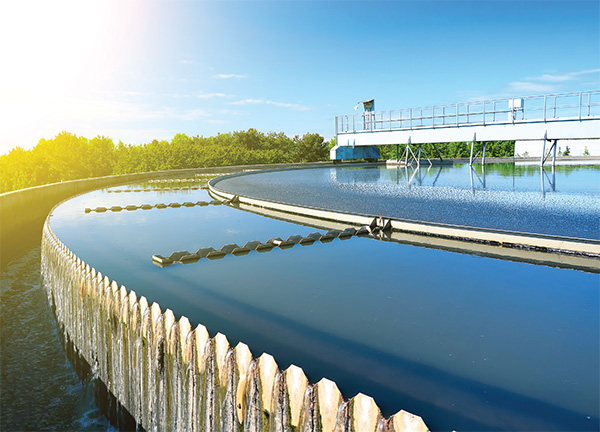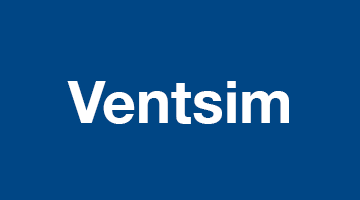Together with its subsidiary Analytik Jena, Endress+Hauser has now developed a verification method that can directly and quickly be used for SARS-CoV-2 analyses in sewage treatment plants.
Click to download and read pdf
“People infected with the SARS-CoV-2 excrete virus particles that can still be detected with PCR technology, but which are no longer infectious in the wastewater,” says Robert Möller, project manager at Endress+Hauser subsidiary, Analytik Jena. “Systematic sewage water analyses can supply data comparable to indirect mass testing and, as a supplement to national test strategies, this can yield a more precise picture of the actual infection rate,” he adds.

Researchers showed that wastewater analysis was a viable option for the detection of SARS-CoV-2 as early as March 2020, when microbiologists in Amersfoort, Netherlands verified the presence of virus particles in sewage water nearly a week after the first case of COVID was officially reported.
“The problem is that the establishment of an early warning system requires sufficient analysis capacity. To date the analyses have been reserved for specialised laboratories, partly because of the complex steps that are involved,” says Möller. With this in mind, Endress+Hauser and Analytik Jena have developed a method that makes it easy to determine the viral load in wastewater – directly at the treatment plant and within three hours (180 minutes). The method thus enables wastewater-based epidemiology and real-time monitoring of public safety.
The method is based on real-time polymerase chain reaction (PCR) testing, the proven gold standard for direct and sensitive detection of the SARS-CoV-2 virus. The new method can also be used to detect the novel coronavirus’ genetic information contained in ribonucleic acid (RNA) in wastewater.
In 2020, the qTower3 real-time PCR thermocycler from Analytik Jena supported the first SARS-CoV-2 wastewater screenings in Japan. Several hurdles stood in the way of the path to detection, however. “First of all, we needed a representative wastewater sample,” explains Achim Gahr, business development manager for Endress+Hauser Liquid Analysis. “But the sample was in the litre range and had a highly complex composition. For real-time PCR testing, it had to be specially prepared and the volume drastically reduced.”
To ensure all of these steps can be carried out effectively at wastewater treatment plants, Endress+Hauser and Analytik Jena have partially automated almost the entire process chain, from sample extraction and enrichment, to nucleic acid extraction and real-time PCR detection. Various instruments from both companies are employed for the method.
The process begins with the CSF48 automatic water sampler from Endress+Hauser, which extracts samples from the water coming into the treatment plant several times a day. Because the incoming volume fluctuates, which influences the concentration level of the residual virus, the test result is based on a mixed 24-hour sample. Thanks to the automation, representative samples are collected over a longer period of time in large amounts and always under the same conditions. The Liquistation CSF48 saves the user time and effort, conforms to worldwide water guidelines and is easy to program, set up and maintain.
The heavily diluted sample is then prepared by extracting and filtering 100 mℓ of water. The residual virus bonds to the filter and is then released again using one mℓ of water. This step increases the concentration of virus fragments in the sample. Homogenisation of the filter membrane is carried out with the SpeedMill PLUS from Analytik Jena, one of the few sample homogenisation instruments on the market able to deliver a reproducible sample when a small footprint is required.
The particle-free sample is then placed in the InnuPure C16 touch from Analytik Jena. It can process up to 16 samples simultaneously and, in combination with the InnuPREP AniPath DNA/RNA kit IPC16, automatically extract the virus’ genetic information. The extracted RNA is now isolated within a 100-millilitre sample and can be analysed with real-time PCR technology.
Using an instrument from the qTOWER³ family of products from Analytik Jena, the RNA sequences are replicated in a thermally controlled process with the help of an enzyme. It becomes apparent that the sample contains the RNA, even during runtime – and the earlier the RNA is detected, the higher the viral load.
Endress+Hauser and Analytik Jena developed this method in partnership with Emschergenossenschaft and Lippeverband (EGLV), Germany’s largest wastewater management company and it was tested at one of EGLV’s treatment facilities.
“On the basis of this partnership, and because the Group boasts all of the necessary technologies, we were able to get the process up and running quickly,” says Gahr. The now-established technology has also highlighted new opportunities that go well beyond the battle against the coronavirus pandemic. “We are now working on processes for acquiring other health-relevant data such as antibiotic-resistant germs, for example,” Gahr concludes.













